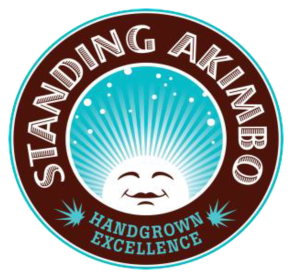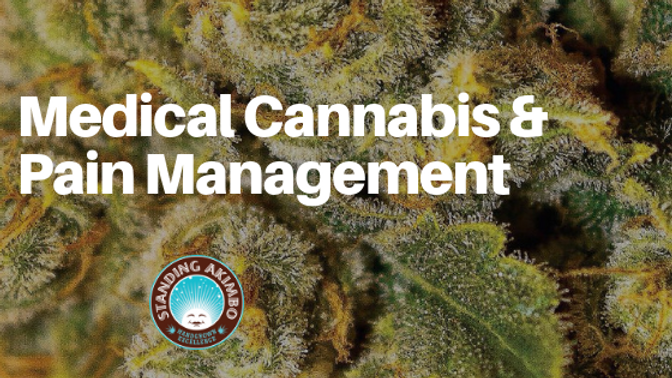Medical Cannabis and Pain
The growing movement for cannabis legalization doesn’t just call to people who are primarily recreational users. In fact, across the nation and the world, cannabis is being realized as an effective, promising method for pain management. To fully understand its effectiveness, it is important to first know the types of pain known to the body and how cannabinoids (the chemical compound in the cannabis plant) can relate to these pain receptors.
Types of Pain
Identifiable pain falls into three general categories: nociceptive, neuropathic, and central. Nociceptive pain is what we know as inflammatory pain, typically caused by tissue damage and feels sharp, aching, or throbbing. Neuropathic pain is damage to the body’s nervous system and effects 7-10% of the population. This can be caused by severe injury, pinching, stabbing, or disease that damages nerves, such as multiple sclerosis, Parkinson’s disease, HIV, or even chemotherapy and can be difficult to treat due to the fact that it cannot be as accurately targeted by drugs like ibuprofen. Central pain is an umbrella term for pain that seems to have no identifiable source or cause other than dysfunction of some part of the nervous system, such as fibromyalgia. In fact, in a study on fibromyalgia and cannabis treatment, all 26 participants stated that they felt benefits of cannabis as medicine and half of these participants stopped taking their other medications altogether.
Pain Signals
The body’s response to pain comes from signals sent from the point of the body to the brain and can be minimal or severe. Strength will vary from person to person, injury to injury, or even just time to time. Mood, context, and attention also feed into these sensations. For nociceptive pain (inflammation), opiates have been traditionally used to weaken the pain signals at the site of injury by blocking the process or signals themselves. This means that although the problem is still present, the brain is not identifying the pain and simply has a mask over it. This may be what causes dependency on certain medications, due to the absence of pain rather than true treatment. The goal of the body, when faced with any kind of pain, is to recruit inflammatory and immune cells to repair the damage, release proteins and chemicals that active these receptors on closest nerves, and send these signals back to the brain. THC has the ability to moderate pain at the level of the spinal cord and brain by activating CB1 receptors (dampening pain signals), and CBD impacts pain processing by activating the CB1 receptors as well as increasing levels of anandamide, and also enhances activity of GABA receptors. By activating CB1 receptors, the severity of pain signals are reduced and natural cellular and anti-inflammatory response is activated.
ECS
When it comes to using cannabis as treatment for medical pain, how it works is cannabinoids (primarily THC and CBD) are received by the receptors in the endocannabinoid system that interact with pain sensation. Although the science is still young, it is seeming that the most effective way to manage pain, long-term, is to balance CBD and THC in products to continue having the same effect and avoiding building too much tolerance. The way these cannabinoids interact with the nervous system is they promote homeostasis, and to achieve homeostasis, sometimes the body needs to send more of these proteins and chemicals to active the receptors (i.e., CBD or THC). Both of these chemicals have been shown to have anti-inflammatory properties, therefore may reduce pain at the site of the injury. THC primarily hits CB2 receptors on immune cells, reducing the body’s pain communication response to the injury, whereas CBD reduces inflammatory responses by blocking inflammatory mediators and shifting the activation macrophage repair cells from antagonist, to protagonist.
CBD & THC
Another meaningful avenue to consider with cannabis and its effectiveness on pain management comes to mood as well. CBD and THC both have mildly euphoric effects, although CBD is non-psychoactive while THC is. It has been shown that pain is more severe with poor emotion, so naturally the way CBD and THC can activate serotonin receptors, elevating mood, can help relieve pain in just that simple way.
All in all, scientific studies are showing that cannabis can be an effective way to treat pain with fewer side effects than many of the alternatives on the market today. It is important to remember that much of what we understand from clinical trials on cannabis and pain management have started with rodent testing, and if successful, graduated to human trials, but science is moving in the right direction. Most studies have shown that balanced THC/CBD or high-CBD products are most effective for optimal pain relief strategy for long-term treatment when dealing with chronic pain conditions.
Come in to Standing Akimbo Medical Dispensary to find a medical marijuana option that works best for you! For further investigation, we recommend this article series from Leafly.
#2019 #tetrahydrocannabinol #CB1 #CBD #THC #antiinflammatory #painmanagement #injury #cannabistreatment #nocioceptivepain #neuropathicpain #fibromayalgia #CannabisLegalization #relievepain #cannabis #marijuana #MedicalMarijuana #standingakimbo #medicaldispensarydenver





